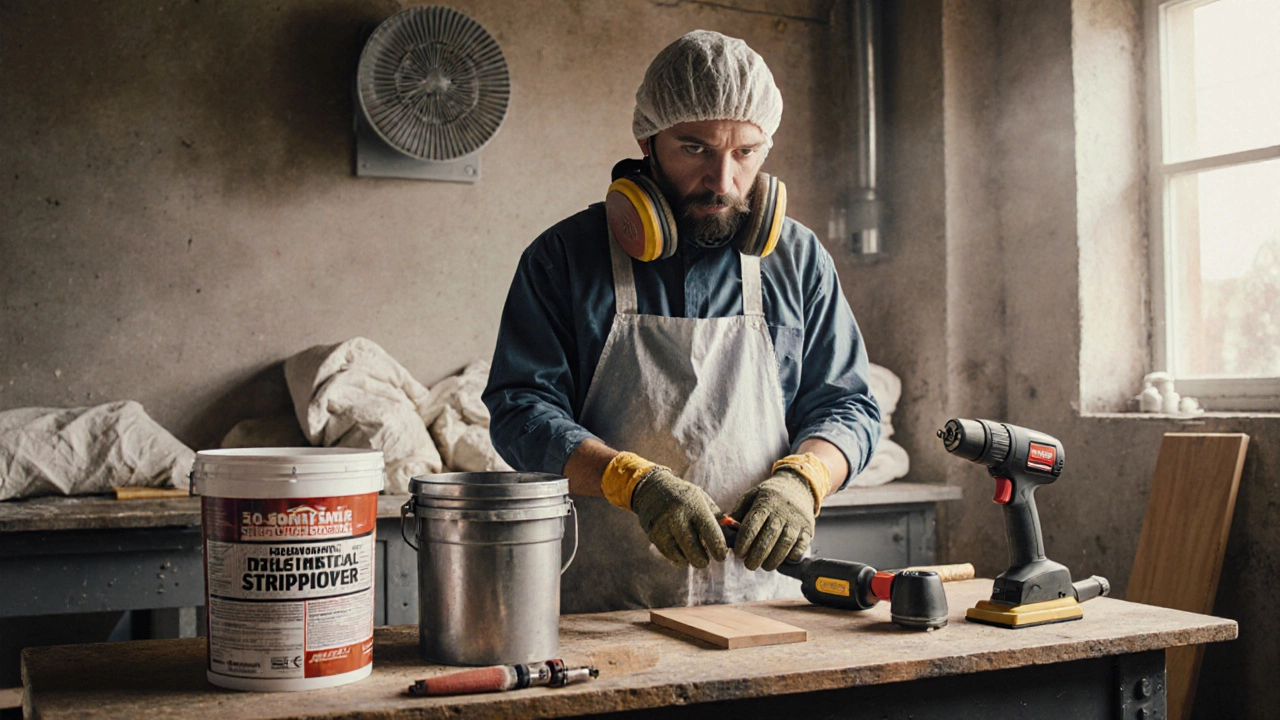Chemical Paint Stripper: A Practical Guide for Artists and Restorers
When working with chemical paint stripper, a formulated liquid or gel designed to break down paint layers for easy removal. Also known as paint remover, it helps artists, renovators, and conservators strip old coatings without damaging the underlying surface. The core idea is that the stripper’s chemicals react with the paint binder, softening it so you can scrape or wipe it away. This process saves time and prevents the harsh mechanical force that can crack delicate substrates.
How Solvents Power the Stripping Process
One key related entity is solvent, the active ingredient that dissolves or swells paint polymers. Solvents can be petroleum‑based, citrus‑derived, or water‑borne, each offering different strengths and evaporation rates. A fast‑evaporating solvent works well on thin latex paints, while a slower‑drying oil‑based solvent handles multiple layers of enamel. Choosing the right solvent influences how quickly the stripper works and how cleanly it lifts the paint, directly affecting project efficiency.
Safety equipment is the next essential piece of the puzzle. When you first encounter a safety equipment, protective gear such as gloves, goggles, and respirators you’re shielding yourself from harsh fumes and skin irritation. Proper gloves prevent chemical burns, while goggles stop splashes from reaching the eyes. A respirator with the right filter protects your lungs from volatile organic compounds (VOCs). Ignoring safety gear can turn a simple stripping job into a health hazard, so always gear up before you begin.
For those in the art world, art restoration, the meticulous process of cleaning, repairing, and preserving artworks often relies on gentle paint removal. Restorers use specially formulated low‑odor strippers to lift old varnish or overpaint without harming original pigments. The stripper’s ability to soften layers without abrasion makes it a cornerstone tool in conservators’ kits, enabling them to reveal hidden details while maintaining the artwork’s integrity.
Surface preparation ties everything together. Before you apply a fresh coat, the substrate must be free of old paint, dust, and oils. A well‑executed stripping step ensures the new finish adheres properly, reducing flaking and extending the life of the surface. Whether you’re prepping a canvas, wood panel, or metal sculpture, the right stripper sets the stage for a flawless result.
Environmental concerns are pushing the industry toward greener alternatives. eco‑friendly paint remover, formulations that use biodegradable solvents and low VOCs are gaining popularity among studios and museums alike. These products deliver comparable performance while minimizing harmful emissions, making them a smart choice for health‑conscious artists and sustainable projects.
Finally, selecting the right product boils down to matching the stripper’s chemistry to your specific job. Identify the paint type, the substrate material, and any safety or environmental constraints. Test a small area first; observe how quickly the paint lifts and whether the surface remains intact. With the right combination of solvent strength, safety gear, and eco‑considerations, you’ll achieve clean removal and preserve the underlying artwork.
Armed with this overview, you’re ready to dive into the collection below. You’ll find deeper insights on paint activation, pricing art services, and the hardest art techniques—all of which intersect with the practical know‑how of using a chemical paint stripper effectively.
